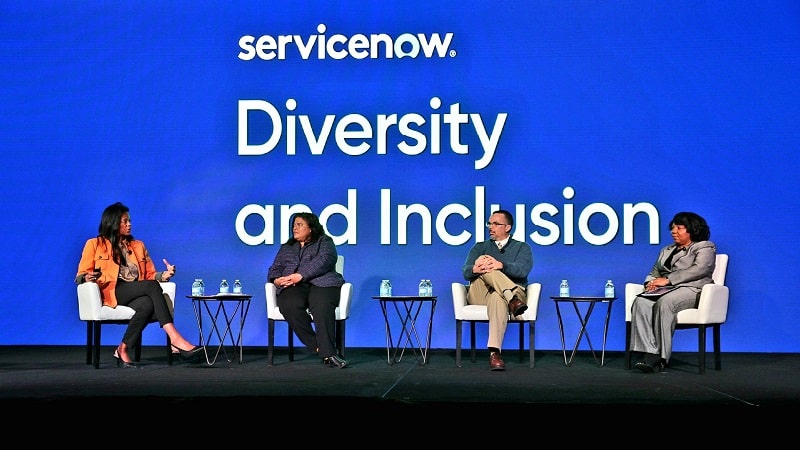
In the summer of 2021, President Biden released the Executive Order (EO) on Diversity, Equity, Inclusion, and Accessibility in the Federal Workforce, and to meet the requirements outlined in the EO Federal agencies have strived to incorporate practices that build up diversity and inclusion in their respective workforce, agency leaders said during the ServiceNow Federal Forum 2022 on Mar.10.
With this EO the Biden-Harris administration has taken a whole-of-government approach to advance diversity, equity, inclusion, and accessibility in the United States. Federal agencies have been tasked with:
- Identifying program and policy barriers facing underserved communities;
- Developing solutions to remove those barriers; and
- Working to embed equitable principles into everything the federal government does.
Traci DiMartini, the chief human capital officer for the General Services Administration (GSA), applauded the administration’s commitment to putting diversity and inclusion at the forefront. She emphasized that for the nation to remain competitive in different arenas embracing diversity, equity, inclusion, and accessibility is a must.
“The EO presents an opportunity for Federal agencies to bake in diversity and inclusion into our practices from how we hire to how we promote. Let’s be clear this is not saying everyone automatically gets the same promotions, but everyone has the opportunity to get that promotion,” DiMartini said.
To ensure the agency is establishing proper diversity and inclusion principles and practices it established an Equity team. The GSA Equity Team helps identify and understand the barriers in agency policies and programs that negatively impact historically underrepresented and underserved communities.
“It is itself a diverse and inclusive group, bringing together perspectives from all walks of life,” DiMartini said. “Because cultivating an environment of diversity and inclusion not only encompasses a diversity of culture, but also a diversity of perspective.”
GSA’s approach to elevating diversity and inclusion in its workforce is just one strategy. Karen Pavlin, the chief equity and inclusion officer at ServiceNow, explained that the EO pushes for more diversity, equity, inclusion, and accessibility in the Federal workforce but there is no roadmap that agencies can follow.
“What is important is that this journey remains ongoing, that it does not become a moment in time but an ongoing whole-of-government effort. And this EO holds us accountable to look at how we are embracing diversity and inclusion and what needs to change to ensure we are,” Pavlin said.
To meet the requirements of the EO the National Science Foundation (NSF) reorganized its enterprise to elevate its previous version of a diversity and inclusion program.
Javier Inclán, the deputy office head of the Office of Equity and Civil Rights at NSF, explained that previously agency leaders ensured they were compliant with rules laid out by the Equal Employment Opportunity Program.
“It is no longer enough to be compliant with equal opportunity principles. We want to go above and beyond, be above compliant to ensure we truly are embracing diversity and inclusion as an agency,” Inclán said.
The reorganization ensures that leaders at the agency are above compliant in diversity and inclusion principles and practices, with the creation of five different programs all aimed at providing equal opportunity and access and eliminating unlawful discrimination, harassment, and retaliation in employment at NSF.
“The Diversity and Inclusion Leadership Group is one example of an intra-agency group that we work with to improve leadership engagement and collaboration on strategic and operational diversity and inclusion priorities in support of NSF’s mission,” Inclán said. The group also provides the agency’s EEO Program a report almost monthly to promote inclusivity and cultural awareness, he added.
